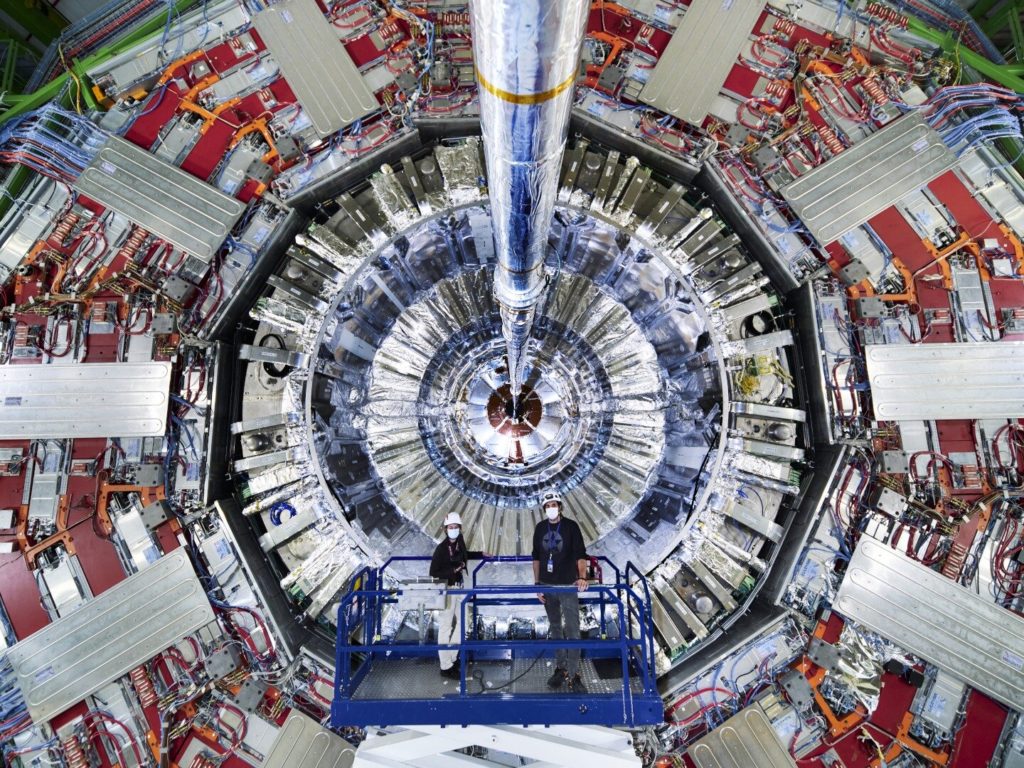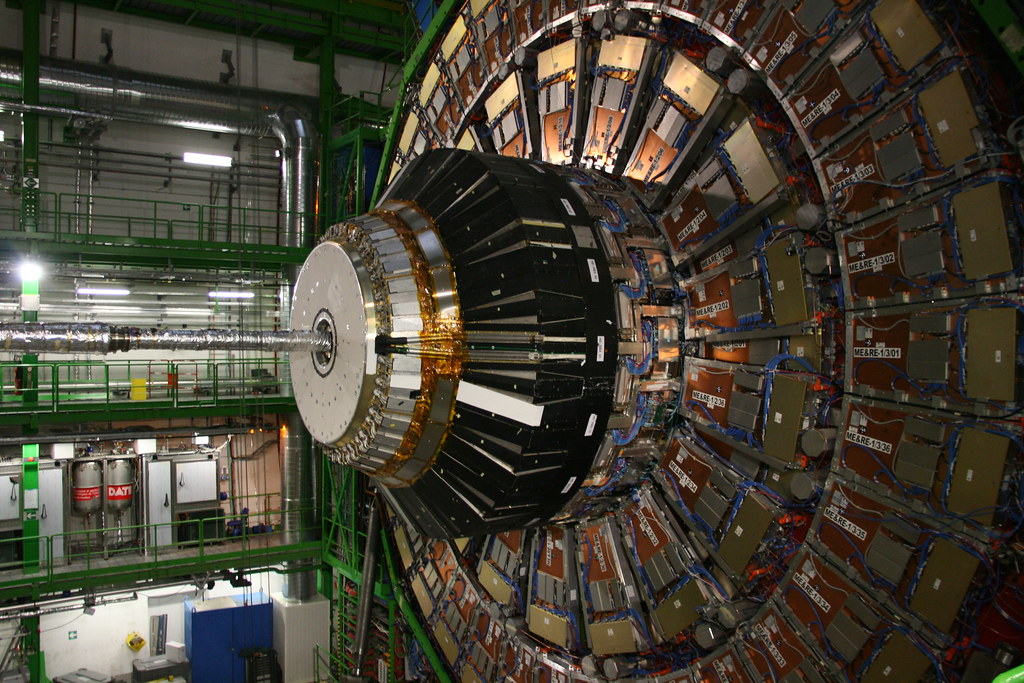In experiments at the Large Hadron Collider, scientists are expected to collect petabytes of data to
Later this decade, scientists will begin toworking with a modernized accelerator for the High-Luminosity LHC (HL-LHC). It will collide more protons with the highest brightness. With its help, scientists plan to observe five to seven times (at least) more collisions than now. Now researchers are creating technologies to improve detectors to cope with the increased brightness.
What updates to expect?
Engineers are upgrading multiple systemsthe CMS (Compact Muon Solenoid) experiment, which helped discover the Higgs boson in 2012, along with the ATLAS experiment. Hundreds of people from universities and laboratories around the world design, build and install new detector components. These technologies will improve on an existing experiment that has been in operation for more than a decade.
Experts are upgrading six key areas:a tracking system, a time detector, a trigger and a data acquisition system, as well as an end calorimeter and a barrel calorimeter, and finally a muon system. CMS scientists will be able to accurately measure and better reconstruct particle interactions in the detector. This will lead to a new understanding of the structure of our universe.
tracker
The CMS tracker displays the path of the particle througha magnetic field. It consists of two components, an internal pixel detector and an external bandpass detector, both of which are completely replaceable. The tracker is the inner area to be upgraded closest to the LHC proton collision site. Since the HL-LHC will push the protons together faster, the particle paths will start to build up rapidly.
 The CMS detector completed several upgrades during a three-year downtime to prepare for its current run at the LHC.
The CMS detector completed several upgrades during a three-year downtime to prepare for its current run at the LHC.
Credit & Copyright: Samuel Joseph Herzog, CERN
The new pixel detector is morea high degree of detail. Scientists need higher speeds and higher levels of detail so that they can actually detect every single particle. Otherwise, there will be so many particles that scientists will just see the spot.
Collaborators will add eight discs to the frontinternal tracker, expanding the coverage of the pixel detector. To quickly process data, the team will assemble and add thousands of small modules to an external tracker. They will be equipped with sensors and application-specific integrated circuit chips that will immediately start filtering and reducing data. So the external tracker will process information at a staggering speed - 40 million times per second.
Time detector
Time detector reduces path clutterparticles, providing researchers with information about when the particle entered the detector. Using the unprecedented accuracy of particle arrival time measurements, physicists will be able to distinguish individual trajectories and reconstruct them in 4D.
The time detector has the shape of a barrel with twoend caps, and its hermetic seal will prevent energy loss and keep dust out. The modernization team is now designing and building modules, electronics and software for the temporary detector.
Trigger and data collection system

CMS detector. Photo: Julian Knutzen
CMS trigger selects potentially interestingcollision events and captures the relevant data, discarding “unnecessary” ones to maintain a manageable amount of data. When running, one of the new triggers will receive information from an upgraded external tracker. It will use artificial intelligence and machine learning to collect the large amount of data expected from collisions at the LHC.
Upgrading the data acquisition system will allow the team to collect data faster to keep up with the increased frequency of collisions at the LHC.
Calorimeters
CMS is equipped with barrel and endcalorimeters - detectors that measure the energy of particles. End - adjacent to the internal detectors and analyzes particle flows from collisions. The current calorimeter will be completely replaced by a new highly detailed one. It is the first of its kind to be used in a collider experiment.
The detector will have improved timing andspatial resolution. In this way, scientists accurately reconstruct the many particles produced. To build it, employees will assemble tens of thousands of modules with small silicon or scintillation sensors. The modules form hundreds of cassettes with integrated circuits and electronics. The data will be processed directly at the detector and transmitted to the data collection system.
The team is also upgrading part of the barreled electromagnetic calorimeter. The new system will come in handy to handle the increased data flow.
Muon system
Collecting information about muons is keyfor CMS. Muons from particle collisions can travel quite a distance without interacting. That is why the detector layer is outside the calorimeters.
 LHC tunnel, sector 3-4. Photo: Maximilien Brice (CERN), CC BY-SA 3.0, via Wikimedia Commons
LHC tunnel, sector 3-4. Photo: Maximilien Brice (CERN), CC BY-SA 3.0, via Wikimedia Commons
The new muon system will be equipped with a modernizedelectronics, better time resolution, and increased ability to detect muons emerging from the beam at a wider range of angles. Several new electronic boards will process and read the data. The engineers are also improving the firmware and software used to control the electronics on the boards.
All updates will significantly expand the capabilities of CMS to detect muons.
What's next?
The CMS detector upgrade is at differentstages, but everything converges to one point in the end. After years of prototyping, scientists create or purchase parts, fabricate system components in various US labs, test them through experiments, and then deliver them to CERN for experimentation. The scientists will install the upgrade components during the LHC's third long shutdown, scheduled for 2026-2028.
After the launch of HL-LHC, increased data volumewill help researchers in the search for rare physical processes and further study of the Higgs boson. Scientists believe that the "god particle" provides the mechanism by which all other particles obtain their mass. However, scientists still have a lot to learn about the Universe by studying the known boson with greater precision.
After all, the Higgs boson is sofundamental particle that just discovering it is not enough. Scientists need to have a lot of additional information to study all its properties and make a breakthrough.
Read more:
The ancient Vikings suffered from a dangerous disease. It is caused by a parasite from Africa
Plant on Mars produces oxygen at the rate of an average tree
Physicists have cooled atoms to record temperatures. They are a billion times colder than outer space.
Cover photo: Vidsplay in Abstract